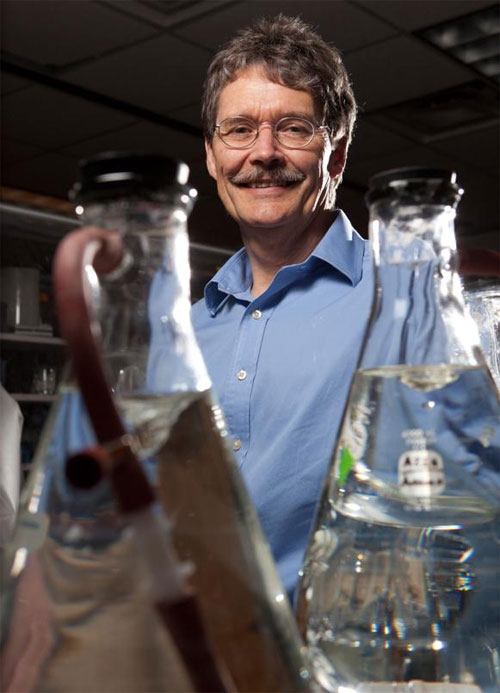Can produce fuel from CO2 atmosphere
(Exceeding the limit) - The excess of the permissible limit of carbon dioxide in the earth's atmosphere is due to the widespread use of fossil fuels, which is the main cause of global climate change. , and researchers around the world are looking for new ways to produce lower carbon emissions.
Now scientists at the University of Georgia have found a way to convert atmospheric carbon dioxide into useful industrial products. Their discovery may soon lead to the creation of biofuels made directly from carbon dioxide in the air. We know that this amount of carbon causes a trap of sunlight and increases global temperature.
'Basically, what we've done is create an active microorganism for carbon dioxide just like the plants do - that is, absorb carbon dioxide and create something useful. ' Professor Michael Adams, a member of UGA's Bioenergy Systems Research Institute, said.
During photosynthesis, plants use sunlight to transform water and carbon dioxide into sugar, which plants use to convert energy into energy, much like humans burn calories from food.

Professor Michael Adams
Sugar molecules can be fermented into fuels like ethanol, but it has proven that it is difficult to effectively extract sugar, the sugar that is kept inside the complex walls of plant cells.
"This discovery means that we can eliminate plants as intermediaries," said co-author Adams, co-author of the study.
Details of their research results are published on March 25 in the online version of the Proceedings of the National Academy of Sciences magazine ( Proceedings of the US National Academy of Sciences ).
"We can take carbon dioxide directly from the atmosphere and turn it into a useful product like fuels and chemicals without having to go through inefficient processes like planting trees and extracting bio-sugar. grade level".
This process is done by a unique microorganism named Pyrococcus furiosus , or "rushing fireball." This microorganism thrives by eating carbohydrates in super hot seawater near holes. By manipulating the genetic material of the organism, Adams and his colleagues created a P. furiosus that is capable of eating carbon dioxide at much lower temperatures.
The team then used hydrogen gas to create a chemical reaction in microorganisms, combining carbon dioxide into 3-hydroxypropionic acid, a common industrial chemical used to make acrylic and many products. other.
With other genetic manipulations on the new strain of P. furiosus, Adams and his colleagues can create a microbial version from which to produce useful industrial products, including fuel from carbon dioxide.
When the fuel is produced through the process of P. furiosus, it releases an amount of carbon dioxide equal to the amount of carbon dioxide used to create it, effectively making its carbon neutral and much cleaner. to replace fossil fuels such as coal, gasoline and oil.
'This is an important first step with a great prospect as a cost-effective and efficient method of fuel production,' said Adams. 'In the future, we will adjust the process and start testing. experience on a larger scale ".
The study was supported by the Department of Energy as part of the Electrofue Program (Electrofuels Program) of the Agency for the Management of Advanced Research Projects - the Energy Sector (Advance Research Projects Agency - Energy or ARPA-E ) under the grant DE-AR0000081.
- Produce fuel from cow's belching gas
- Cheap fuel production by ALD method
- Can produce diesel fuel from mushrooms
- NASA wants to produce fuel for spacecraft right on Mars
- The era of home fuel production
- The first factory produced fuel from algae
- New fuel from straw
- Fuel cells use polluted substances to produce electricity
- New method of producing carbon neutral fuel from CO2
- Produce oil from artificial plants
- China: Production of dimethyl ether instead of diesel
- Coffee bodies will make fuel run cars
 Is the magnetic North Pole shift dangerous to humanity?
Is the magnetic North Pole shift dangerous to humanity? Washington legalizes the recycling of human bodies into fertilizer
Washington legalizes the recycling of human bodies into fertilizer Lightning stone - the mysterious guest
Lightning stone - the mysterious guest Stunned by the mysterious sunset, strange appearance
Stunned by the mysterious sunset, strange appearance